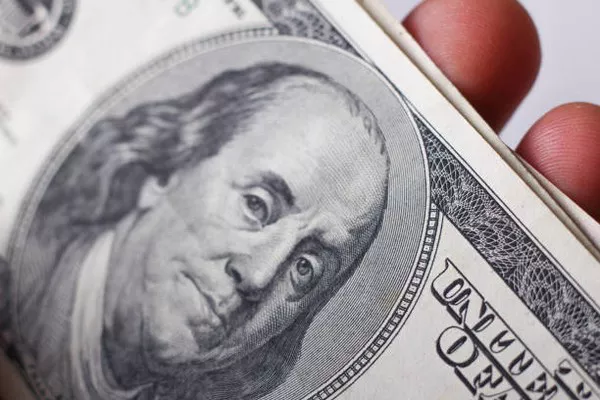One-dollar coins hold a unique place in numismatic history, yet they remain a rare sight in everyday transactions. Despite their scarcity, these coins have a rich heritage and are revered by collectors worldwide. In this article, we delve into the intricacies of one-dollar coins, exploring their scarcity, historical significance, and enduring allure.
Understanding the Rarity
The Genesis of the One Dollar Coin
The history of the one-dollar coin in the United States dates back to the nation’s founding. The Coinage Act of 1792 authorized the production of silver dollars, marking the inception of the denomination. These early coins, featuring iconic designs such as the Flowing Hair and Draped Bust motifs, were relatively common in circulation during the late 18th and early 19th centuries.
Shifts in Circulation Patterns
However, the circulation of one-dollar coins began to decline in the mid-19th century due to various factors, including the widespread use of paper currency and the decreasing silver content of the coins. By the late 19th century, the Morgan and Peace silver dollars emerged as the primary one-dollar coins, but their circulation remained limited.
Transition to Modern Coinage
In the 20th century, the United States Mint experimented with different compositions and designs for one-dollar coins. The Eisenhower Dollar, introduced in 1971, featured the iconic image of President Dwight D. Eisenhower on the obverse and the Apollo 11 moon landing on the reverse. Despite initial enthusiasm, the Eisenhower Dollar failed to gain traction in circulation.
Factors Contributing to Rarity
Limited Production
One of the primary reasons for the rarity of one-dollar coins is their limited production compared to other denominations. The United States Mint typically prioritizes the production of coins in higher demand, such as quarters, dimes, and pennies, leading to fewer quantities of one-dollar coins being minted.
Preference for Paper Currency
Another factor influencing the rarity of one-dollar coins is the preference for paper currency among consumers. While coins are durable and cost-effective in the long run, many individuals still prefer the convenience of paper bills for everyday transactions. As a result, one-dollar coins are often overlooked and remain scarce in circulation.
Hoarding and Collecting
The allure of one-dollar coins as collectibles also contributes to their rarity in circulation. Many collectors actively seek out rare and commemorative issues, removing them from circulation and further reducing their availability to the general public. Additionally, some individuals hoard one-dollar coins as investments or for numismatic purposes, further limiting their circulation.
Efforts to Promote Usage
Despite their rarity, efforts have been made to promote the circulation of one-dollar coins in the United States. Initiatives such as the Presidential $1 Coin Program, launched in 2007, aimed to honor former presidents while encouraging the use of one-dollar coins in everyday transactions. However, these efforts have had limited success, and one-dollar coins remain relatively scarce.
Historical Significance
Symbolism and Representation
One-dollar coins hold significant symbolism and historical representation, often featuring iconic figures and symbols of American heritage. From the early silver dollars depicting Lady Liberty to the modern Presidential and Native American series, these coins serve as tangible reminders of the nation’s history and values.
Commemorative Issues
In addition to regular coinage, the United States Mint issues commemorative one-dollar coins to honor significant events, individuals, and milestones. These coins often feature unique designs and limited mintages, making them highly sought after by collectors and further contributing to the rarity of one-dollar coins.
Legacy of Innovation
Throughout history, one-dollar coins have been at the forefront of numismatic innovation, showcasing advancements in design, security features, and minting techniques. From the intricate incuse designs of the Sacagawea Dollar to the high-relief images of the American Innovation series, these coins exemplify the Mint’s commitment to excellence and creativity.
Collecting and Investment
Numismatic Value
For collectors, one-dollar coins hold both numismatic and intrinsic value, with rare and limited-edition issues commanding premium prices in the marketplace. Collectors often seek out coins in pristine condition, graded by reputable third-party grading services, to add to their collections or investment portfolios.
Investment Potential
In addition to their numismatic value, one-dollar coins can also serve as alternative investments, offering potential returns over time. Rare and historically significant issues, such as certain Morgan or Peace silver dollars, have demonstrated appreciation in value, making them attractive options for investors seeking diversification.
Preservation and Storage
Proper preservation and storage are essential for maintaining the condition and value of one-dollar coins. Collectors often utilize protective holders, albums, or safety deposit boxes to safeguard their collections from environmental damage, handling, and theft.
The Future of One Dollar Coins
Innovation and Evolution
Looking ahead, the future of one-dollar coins is ripe with possibilities for innovation and evolution. The United States Mint continues to explore new designs, materials, and technologies to enhance the appeal and functionality of one-dollar coins, potentially increasing their circulation and popularity.
Digital Currency and Cashless Transactions
However, the rise of digital currency and cashless transactions presents challenges to the future viability of one-dollar coins. As more consumers embrace electronic payments and mobile wallets, the demand for physical currency, including coins, may continue to decline, further impacting the circulation of one-dollar coins.
Legacy and Continuity
Despite these challenges, one-dollar coins will likely endure as enduring symbols of American heritage and identity. Whether as collectibles, investments, or everyday currency, these coins embody the legacy of the past while embracing the possibilities of the future, ensuring their place in numismatic history for generations to come.
See Also A Comprehensive Guide on How to Find Rare Dollar Bills
Conclusion
In conclusion, one-dollar coins remain a rarity in everyday transactions, yet they hold significant historical, cultural, and numismatic value. From their humble beginnings in the 18th century to their modern incarnations, these coins have captured the imagination of collectors and enthusiasts worldwide. While their scarcity may persist, the enduring allure of one-dollar coins ensures their continued relevance in the ever-changing landscape of currency and commerce.


